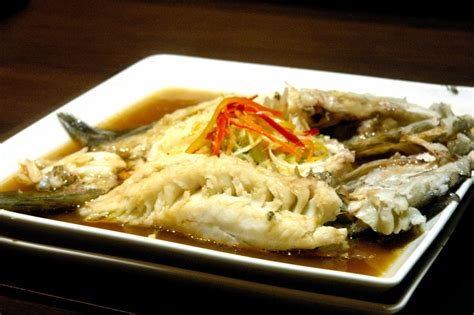A Guide to the Best Islands in Thailand: Discover Famous and Hidden Gems
Thai cuisine is a delightful dance of flavors, where sweet, sour, salty, bitter, and spicy elements come together to create a symphony on the palate. This delicate balance is what makes Thai food so memorable, offering complexity and harmony in every bite. While the balance of these flavors may seem intricate, with some basic understanding and tips, you can achieve it at home and experience the authentic taste of Thailand.
The Five Essential Flavors in Thai Cuisine

To master the art of Thai cooking, it’s important to recognize the role of the five key flavors: sweet, sour, salty, bitter, and spicy. Each flavor plays a unique part in creating a balanced dish that is full of depth and complexity.
Sweet
Sweetness in Thai food is usually derived from palm sugar, coconut milk, and fruits like pineapple or mango. Unlike Western dishes, where sweetness can dominate, in Thai cuisine it tempers the heat from chilies and the tang from sour ingredients.
Tip: Palm sugar is the go-to sweetener in many Thai dishes. Its subtle caramel flavor blends smoothly into dishes like Green Curry or Pad Thai.
Sour
Sourness is a key element in Thai dishes, often brought in by lime juice, tamarind, or rice vinegar. Sour notes help cut through richness and give dishes a refreshing zing.
Tip: A squeeze of fresh lime juice over a dish at the end of cooking brightens the flavors and adds a clean, tart finish.
Salty
Thai cuisine relies heavily on fish sauce for its saltiness, though soy sauce is also used in some recipes. Fish sauce not only adds salt but a rich umami depth that enhances other ingredients.
Tip: Use fish sauce sparingly at first. It can be strong, so it's better to add it gradually and adjust to taste.
Bitter
While bitterness may not always be prominent, it plays a supporting role in Thai food. Bitter notes, from vegetables like bitter melon or from herbs, balance out rich, sweet, and spicy flavors.
Tip: Try incorporating bitter melon in stir-fries or soups for a subtle bitter taste that balances out other flavors.
Spicy
Thai cuisine is famous for its bold spiciness, with heat coming from fresh or dried chilies, chili pastes, and chili oils. The spice doesn’t just add heat; it enhances other flavors in the dish.
Tip: If you’re new to Thai cooking, start with milder chilies or use chili paste to control the heat more easily.
How to Balance Flavors in Thai Cooking
While Thai chefs expertly balance these flavors, achieving this harmony at home is easier than you think. Here are a few techniques to help you create balanced, flavorful Thai dishes in your kitchen:
Layer your flavors.
Start by sautéing aromatics like garlic, shallots, lemongrass, and ginger. This creates a fragrant base on which you can build the sweet, salty, sour, and spicy components.
Taste and adjust.
Thai cooking is very adaptable. As you cook, taste your dish and adjust the flavors as needed. If it’s too salty, add a bit of sweetness. If it’s too sweet, add a dash of lime juice for brightness. The key is to find a balance that suits your palate.
Use fresh ingredients.
Freshness is essential in Thai cooking. Fresh herbs like cilantro, mint, and Thai basil add bright, aromatic notes that help balance richer or spicier elements. Fresh lime juice, chilies, and coconut milk are also key to getting that authentic Thai flavor.
Focus on contrast.
In Thai cuisine, contrast is important. Dishes often feature a mix of crunchy and soft textures, hot and cold temperatures, and bold and subtle flavors. This keeps the palate engaged and enhances the overall dining experience.
Balance across the meal.
While individual dishes have balanced flavors, Thai cuisine also often balances flavors across the meal. For example, a spicy soup like Tom Yum might be paired with a sweeter dish like Mango Sticky Rice, ensuring that the overall meal is harmonious.
Iconic Thai Dishes and Their Flavor Profiles
Pad Thai
A classic Thai noodle dish that balances sweetness from palm sugar, saltiness from fish sauce, sourness from tamarind, and a hint of spice from chilies.
Tom Kha Gai (Coconut Chicken Soup)
A rich, creamy soup with coconut milk that balances sweet, sour, and spicy flavors. Lime juice adds brightness, while galangal and chilies provide heat and depth.
Som Tum (Papaya Salad)
This vibrant salad offers a crisp, refreshing balance of sweet, salty, sour, and spicy flavors, making it the perfect side dish to richer curries or grilled meats.
Gaeng Keow Wan (Green Curry)
A smooth and creamy curry where the sweetness of coconut milk is tempered by the heat of green chilies and balanced by the salty umami of fish sauce.
Conclusion
Mastering the art of balancing flavors in Thai cuisine is all about understanding the role of sweet, sour, salty, bitter, and spicy elements and knowing how to adjust them to your taste. Whether you’re preparing a simple Pad Thai or a more complex green curry, the key is to taste as you go and adjust the balance of flavors until you find the perfect harmony.

#ThaiCuisine #FlavorsOfThailand #BalancingFlavors #ThaiFoodAtHome #SweetSourSaltySpicy
#ThaiCookingTips #ThaiFoodLovers #AuthenticThai #ThaiRecipe #CulinaryBalance
#TasteOfThailand #ThaiFoodInspiration #HomeCooking #ThaiFlavorsExplored #FoodHarmony
info from blog at https://www.saosiam.org/blog/explore-famous-and-hidden-gems